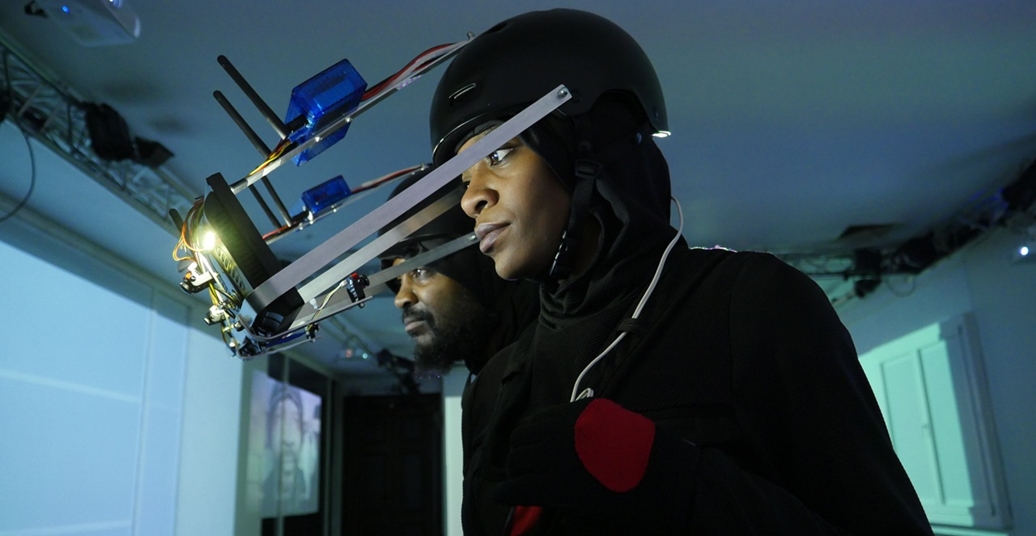Zé de Paiva’s “CYCLOPS” casts the camera as the eponymous beast, but is this one-eyed machine a monster or a god?
Projections flicker on all four walls; pixelated surveillance footage, blizzards of static, blue-screen error messages. People seem unsure of where to sit – or whether to sit at all – and so line up with their backs against the wall, or clump into groups in the centre of the room. With this overload of images flashing around us, where should we look? It turns out, the more pressing question posed by “CYCLOPS” is: ‘Why do we look where we do, and who decides?’
Zé de Paiva and Nasheeka Nedsreal enter the performance space dressed in futuristic boiler suits. They each wear a helmet with a large camera mounted on it, fixed directly in front of their eyes. It live streams their point of view: de Paiva’s onto one wall, Nedsreal’s onto another. As they move through the space, a choice presents itself; do I watch these two cyberpeople walking impassively around, or do I instead look at the screens to see the world as they are seeing it? I choose to combine both, gladly taking on the role of editor, selecting and cutting together the different visual information to create my own version of events.
The two performers move through the audience, and then begin to bring each of us, one by one, to our feet, turning us by the shoulders and angling our vision, enforcing a perspective on us. A disparity is created – some of us are granted a full view of the room, while others are left facing the wall. The privileges inherent in the role of editor are exposed – sometimes your perspective is decided for you, and the power lies with whoever gets to frame the narrative. As authority and opportunity are reassigned within this constructed microcosm, wider issues of complicity hover at the edges of the room.
A throbbing drumbeat starts up and the cameras switch into selfie mode. We see the performers’ faces, up close, looming large on the walls. They weave their way among us, shuffling their feet, raising their arms, and twisting their hips. Their energetic movement contrasts sharply with us, the members of audience, who stand rooted to the spot. On the screens, however, their faces are immobile – anchored in place in relation to the cameras. Behind them, it is we who are spinning and pitching from side to side. The camera never lies? Once more, perspective is everything.
A text scrolls around the walls like ticker tape, drawing attention to the role of the camera in colonialism, and the violence implicit in the double meaning of the word ‘shooting’. De Paiva and Nedsreal select a handful of audience members and line them up against a wall, taking a polaroid picture of the uncomfortable group. As the process is repeated against each of the four walls, there is aggression in this act of photographing the somewhat unwilling participants – but who is the firing squad here? The photographers, or us as a crowd of observers? Another group is coerced into being ‘shot’, and I become keenly aware of my position as a silent bystander. De Paiva uses the camera to draw a thread between colonial past and present, and the political implications of one’s role in relation to the lens are brought sharply into focus.
As the printed photographs are laid out in a circle at the centre of the room, they look like fragments of the past, or a trail of breadcrumbs dropped along the way. Or perhaps they are stolen moments, displayed as curiosities in a museum.




